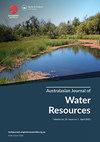墨累-达令盆地的水治理、法治与风险调控
IF 2.2
Q2 WATER RESOURCES
引用次数: 2
摘要
摘要在澳大利亚墨累-达令盆地(MDB),法律明确要求制定管理水质和水量风险的策略。在本文中,我们分析了流域的水治理,找出了治理标准和实践不足的地方。多边发展银行目前的安排显示出不足和脆弱性,限制了应对已知或新出现风险的能力,并削弱了管理机构的合法性。我们对改革问题和机遇的分析是根据经合组织的良好水治理原则和法治的法律概念进行的。我们得出的结论是,忽视采用更好的水治理实践的机会对多边开发银行的共享水域来说是一个严重的风险。为了克服反动的危机反应改革,我们建议进行改革,增强对治理结构、规则、做法和参与的批判性评估。因此,拟议的政策、机构和立法改革并不是简单地尝试一次性的改革,以提高透明度和问责制,而是寻求将持续、持续改进水治理的过程写入其中。本文章由计算机程序翻译,如有差异,请以英文原文为准。
Water governance, the rule of law and regulating risks to the Murray–Darling Basin
ABSTRACT In Australia’s Murray – Darling Basin (MDB), the law explicitly requires strategies for managing risks to water quality and quantity. In this paper, we analyse water governance in the Basin, identifying inadequate governance standards and practices. Current arrangements in the MDB demonstrate deficiencies and vulnerabilities that limit capabilities for dealing with known or emerging risks and erode the legitimacy of governing institutions. Our analysis of the problems and opportunities for reform is informed by the OECD’s principles of good water governance and the legal concept of the rule of law. We conclude that ignoring opportunities to adopt better-practice water governance is a severe risk to the MDB’s shared waters. To overcome reactionary crisis-reaction reform, we propose reforms that empower critical evaluations of governance structures, rules, practices and participation. Therefore, proposed reforms of policy, institutions and legislation do not simply attempt one-off changes to enhance transparency and accountability but instead seek to enshrine processes of continuous, ongoing improvements to water governance.
求助全文
通过发布文献求助,成功后即可免费获取论文全文。
去求助
来源期刊

Australasian Journal of Water Resources
WATER RESOURCES-
CiteScore
5.10
自引率
21.90%
发文量
25
期刊介绍:
The Australasian Journal of Water Resources ( AJWR) is a multi-disciplinary regional journal dedicated to scholarship, professional practice and discussion on water resources planning, management and policy. Its primary geographic focus is on Australia, New Zealand and the Pacific Islands. Papers from outside this region will also be welcomed if they contribute to an understanding of water resources issues in the region. Such contributions could be due to innovations applicable to the Australasian water community, or where clear linkages between studies in other parts of the world are linked to important issues or water planning, management, development and policy challenges in Australasia. These could include papers on global issues where Australasian impacts are clearly identified.
 求助内容:
求助内容: 应助结果提醒方式:
应助结果提醒方式:


